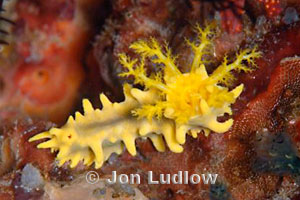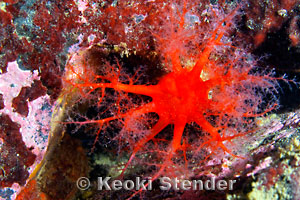Stayin' Alive: Adaptations
Water-Vascular System

RespiratoryTrees

Unlike other echinoderms, the sea cucumber
possesses respiratory trees. These are structures sea cucumbers have
developed in order to breathe oxygen. The structures which are simply deep invaginations into
the body of the holothurian, are similar to simple lungs; however,
rather than taking in air through the mouth, the respiratory
trees draw in and expel water from the cloaca or anus. The
respiratory trees then absorb oxygen from the water which is
then to be
distributed throughout the body. In addition to being a
beneficial and crucial organ to sea cucumbers, it also provides
housing for an organism called Pearlfish. This structure is very well
developed in the species Stichopus chloronotus
Catch Connective Tissue
Catch connective tissue is the name given to connective tissue
in holothurians and is often times referred to as mutable collagenous
tissue. It is believed that this tissue is able to contract and
expand under the control of the nervous system and can cause
their bodies to become extremely stiff, or in some cases, like
in the case of Stichopus chloronotus, it can possibly cause
its body
to soften to the point where the body will liquify and drip between your
fingers. This will more than likely result in the death of the
organism. The function of this tissue has been thought to be mainly
associated with locomotion; however, Stichopus chloronotus
is capable of shedding this same catch connective tissue rather
easily when attacked by a predator. For this reason, it has been
thought that this tissue
could be used as a defense mechanism. See the page on
interactions to learn more about this. Along
with this, Stichopus chloronotus is able to divide itself much more
easily than other holothurians capable of asexual reproduction. This tissue
could help play a role in the ease at which Stichopus chloronotus
is able to perform transverse fission. Click here
to learn more about this interesting method of reproduction.
Keep going to find out how Stichopus chloronotus provides itself with nutrients!
Or, check out some other great organisms at Multiple Organsims!


